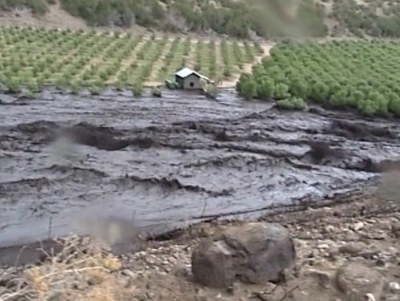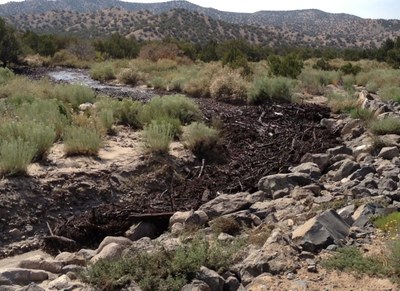Floods Following Wildfire
 |
|---|
| Dixon’s Apple Orchard Cochiti Canyon Flood August 22, 2011 Credit: Phoebe Suina, Pueblo of Cochiti |
Wildfires dramatically change landscape and ground conditions, which can lead to increased risk of flooding during heavy rains because the burned ground is unable to absorb the falling rain, producing runoff conditions much like a parking lot. Because of this, even modest rainstorms over a burned area can result in flash flooding downstream. These floods are typically much larger for a given sized storm than they were before the wildfire, so flooding is likely to be much more extensive following wildfire, endangering properties previously considered safe from flooding. These floodwaters typically transport surface debris such as downed trees, boulders, and gravel.
Many areas in New Mexico are at an increased flood risk due to wildfires in recent years. Residents and businesses in areas downstream of a wildfire need to be aware of the hazards they face, the steps they can take to reduce their risk, and resources that may be available to assist them.
 |
|---|
| Debris Flow in Peralta Canyon August 19, 2012 Credit: Ryan Weiss |
Post-Fire Floods and Debris Flows
In New Mexico, the biggest threat from wildfire, both in terms of life-safety and damages, comes from post-fire flooding. This flooding typically occurs during the summer and early fall associated with thunderstorms that develop during monsoon season. These storms are typically very local, very intense, and of short duration, delivering a lot of rain in a short amount of time. When such storms develop over burned areas, the ground cannot absorb the rain. The precipitation runs off the burned area, and accumulates in streams, producing a flash flood.
